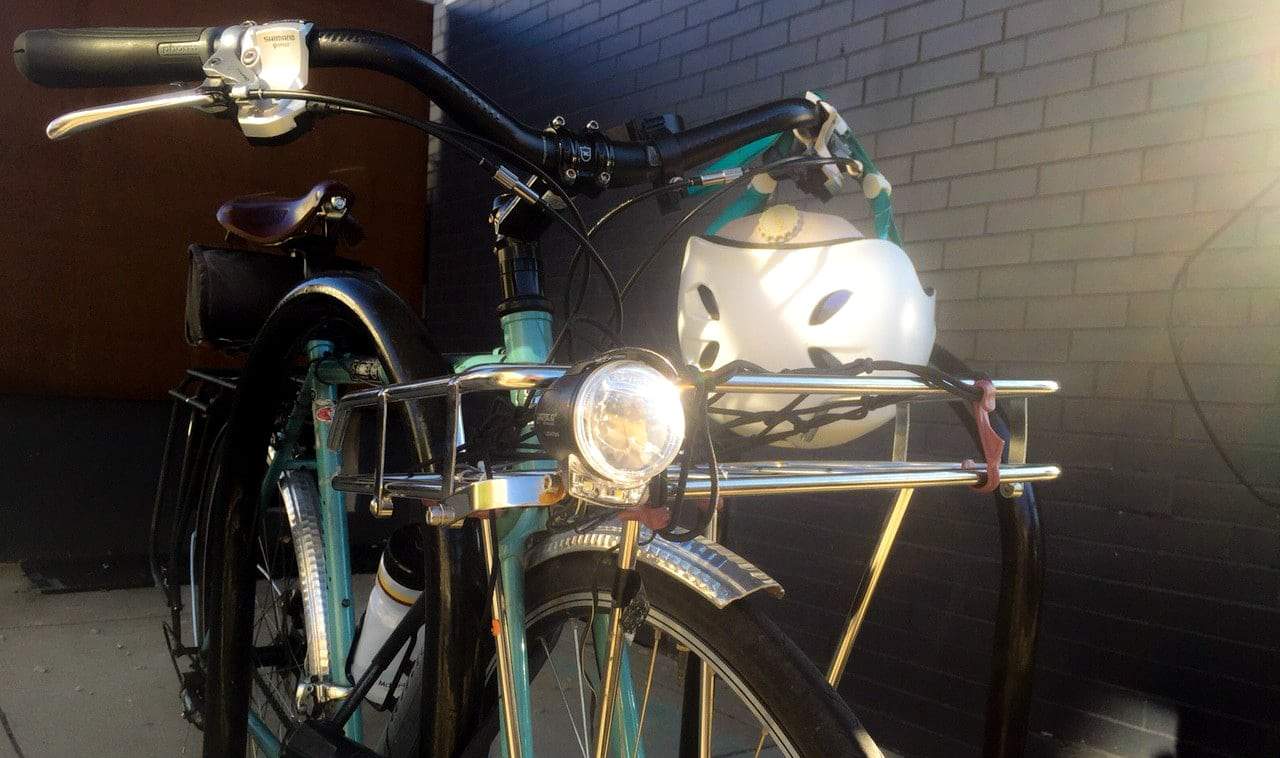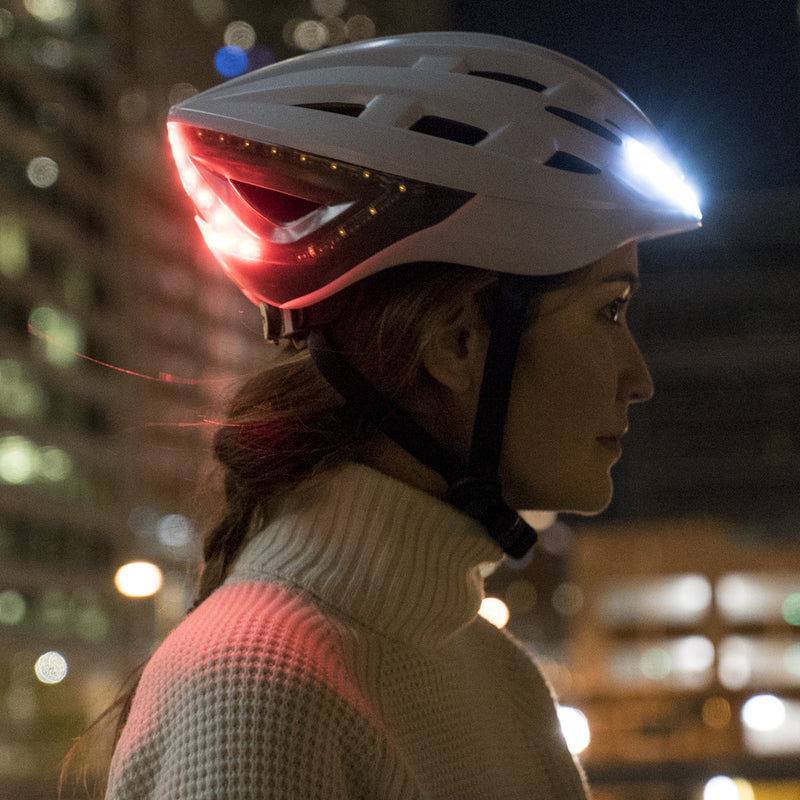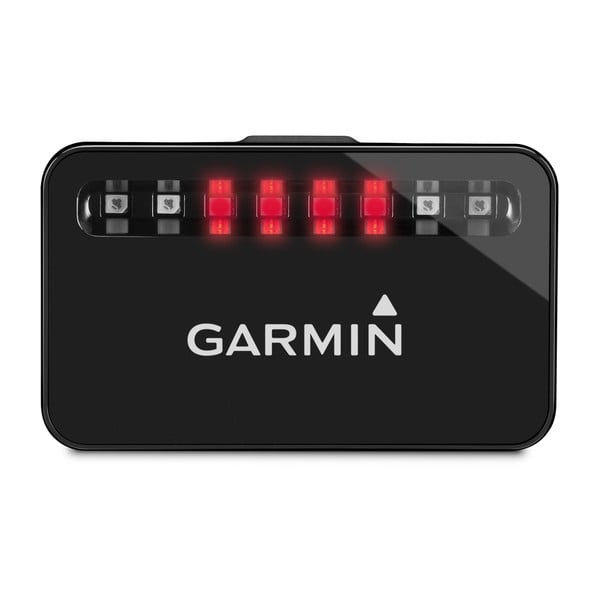
It’s time to shed some light on bike lights
Bike lights come in many different shapes and sizes. If you are new to cycling the choices can be overwhelming. While there are hundreds of different options just remember that any light is better than no light at all.
Before we start there are a few things to consider. Almost every light brand has a different way to mount a light to your bike. These mounts can be bolted on, metal or plastic clips, rubber bungees, or even velcro. Look for lights that have a mount that work for you. If you don’t like to take your lights on and off look for a bolt on system. Helmet mounts are good for people riding in the woods or looking for increased visibility. Bungees and clips are great for people that want to move a light from one bike to the next quickly. If you are not sure how a light mounts feel free to ask the employees at your friendly neighborhood bike shop.
The first question to ask yourself when purchasing a bike light is: “How bright does a light need to be?” Your budget and the kind of riding you do will effect what light we recommend. We use the industry term “lumens” to measure how bright each kind of light is. You will also find this measurement on most light sets online and in bike shops.
Almost every light out there will have a few different modes. High, medium, low and flashing are standard on most lights. As a general rule, the brighter the setting the faster your battery will drain, with flashing modes lasting the longest.
Here’s what we recommend for brightness:
Front Light Brightness
City Riding: at least 50 lumens
Unlit Paved Trails: 200+ lumens
Mountain Biking Trails: 350+ lumens
Rear Light Brightness
All Riding Styles: 10 – 50 lumens
Take a look at our bike light breakdown

Image courtesy of: Bicycle Times
Rechargeable
Probably the largest segment of the bicycle light market. There are many brands to choose from and brightness can vary dramatically. High end rechargeable lights can be as bright as high beams found on motorcycles and cars. There are plenty of lights to choose from, with brighter lights being better for remote locations and mountain biking.
Pros:
- Reusable battery
- Can be very bright
- Most are easy to swap between bikes
- Offer a variety of mounts from helmets to handle bars
Cons:
- Lights “die” with little notice
- Quality and brightness varies with price
- You have to remember to charge them
- You can get stuck with a dead light and no way to charge
Price: $ – $$$$
Lumens 20 – 1600+ Front | 5 – 50 Rear
Staff Pick:
Sarah –Light & Motion Urban 350 and Blackburn 2’Fer Front and Rear Bike Light
Mike – Nite Rider SWIFT 450 & SABRE 80 COMBO
Eric – Cygolite Streak 450 USB and a Niterider Cherrybomb 35
Dan – Cygolite Dice HL 150 USB and Dice TL 50 USB
Alex – Garmin Varia UT800 Smart Headlight and Specialized Stix Sport Rear
Chris – Knog Blinder 400 and Bontrager Flare
Battery Power!
Good old fashion AAA, AA and coin cell battery powered lights are still a very popular option. These lights are great for people who find themselves without the ability to charge lights or who do not use lights very often. Battery lights come in all different shapes and sizes, but front lights tend to be larger than their rechargeable siblings and are often less expensive.
Pros:
- Standard batteries are available just about anywhere
- Still the most common entry level light
- Longer run time per set of batteries than most rechargeable options
- Lights dim before “dying”
Cons:
- Recycling dead batteries
- Not as bright as higher end rechargeable lights.
- Front lights are often larger than rechargeable versions.
Price: $-$$
Lumens: 10-150 Front | 5-50 Rear
Staff Pick:
Julie – Blackburn Designs Local 50 front and Local 10 Rear <– Used in Operation Illumination
Dynamo Hub and Light
You might have seen this style of light on Healthy Ride bikes in Pittsburgh or on bicycles in Europe. A Generator or Dynamo Hub creates power to light up your path as you ride. No batteries are required but you will need some special equipment for this style of light including a front wheel equipped with you guessed it, a dynamo hub. Expect to spend at least $200 for a basic wheel and another $100+ for front and rear light.
Pros:
- No need to charge
- Always attached to your bike
- Very reliable
Cons:
- Expensive to outfit your bike
- Cannot move between bikes
Price: $$$
Lumens: 150-200 Front |15 – 50 Rear
Staff Pick:
Scott – SuperNova e3 Front and Rear
Jane – Busch & Muller Lumotec IQ Premium

Reflectors are great for added visibility and work with / without batteries at night. Be cautious of single led novelty lights.
Novelty Lights
Turn off all the lights in your house at night and try to use one of these small red lights to walk around your living room without stubbing your toe. If you can’t do it, don’t think these free lights are going to be any better at navigating the city at night. That said, these lights are better than nothing to get you home.
Pro:
- Will make you legal on the road
- Reflectors always work regardless of batteries
Cons:
- Batteries die and are not easily replaced
- Not bright enough to find your way
- Difficult for other people to see you.
Price: Free – $
Lumens: 1- 20 Front and Rear
Other Noteworthy Mentions:
Lumos Cycling Helmet With Lights
This is a new product to the market that integrates with your helmet. For those looking for a simple option to always have lights with them it is a great combination. More expensive models even feature turn signals for added night time visibility.
Garmin Light + Rear Radar is one of the more high tech solutions for rear lights with a variable light flash that also features a radar system to alert you to a car coming up behind you.
Stay in touch for more resources:
Sign up for Bike Pittsburgh’s newsletter, The Messenger, to get the latest news on events, bike and pedestrian infrastructure, and fun, delivered straight to your inbox. Twice monthly emails, no spam.
Sign Up!





